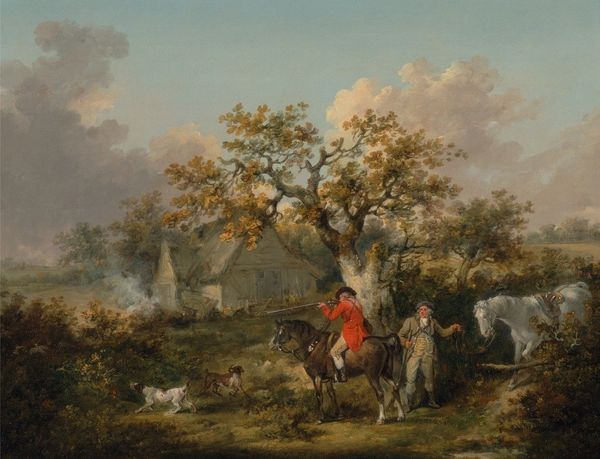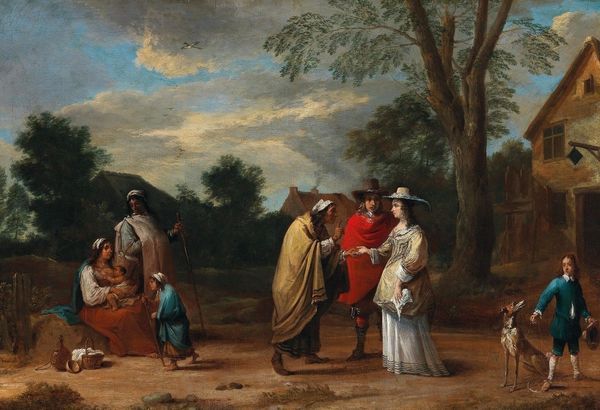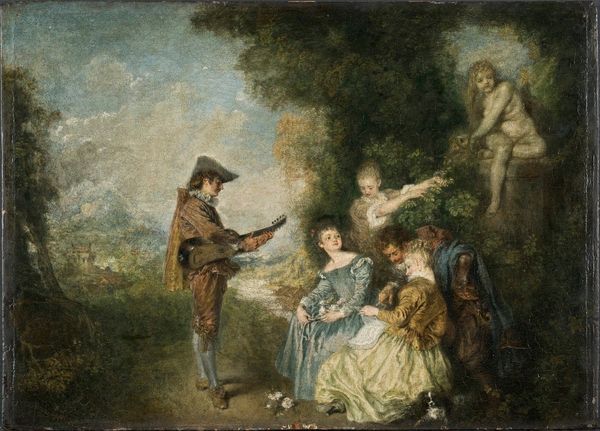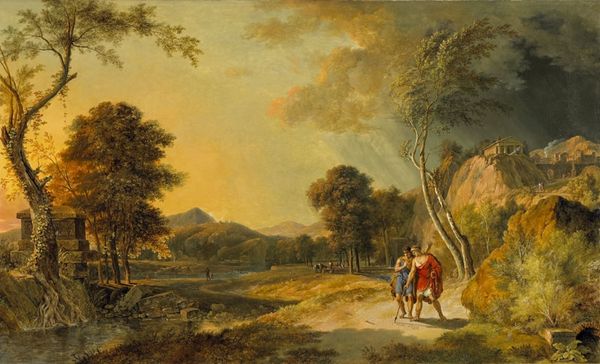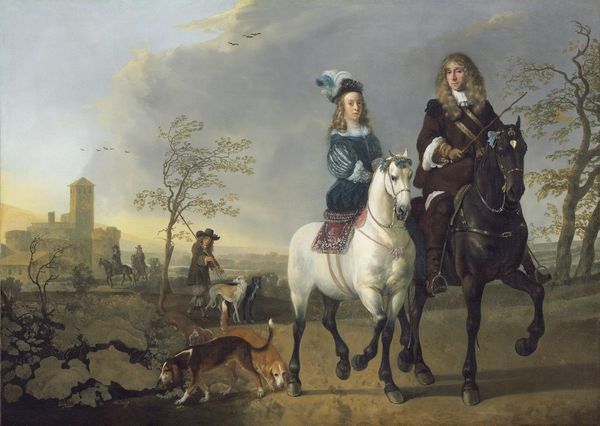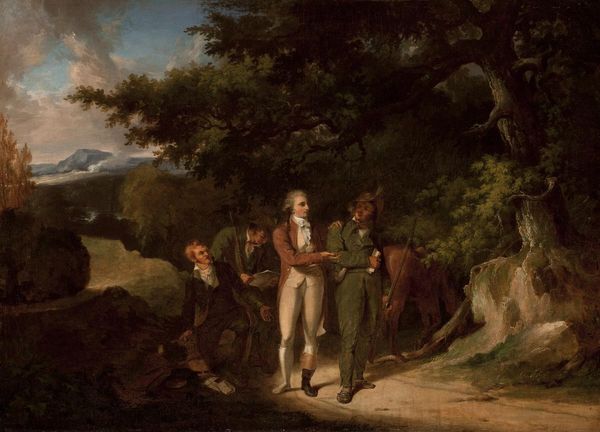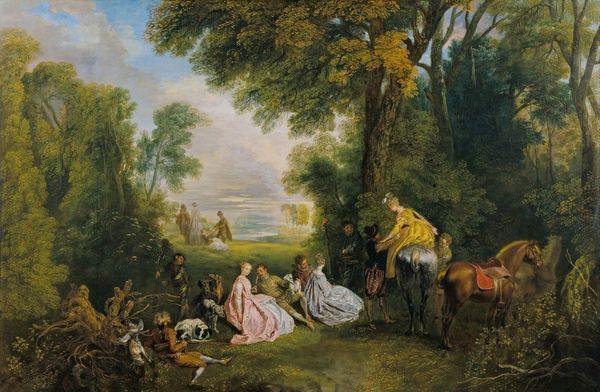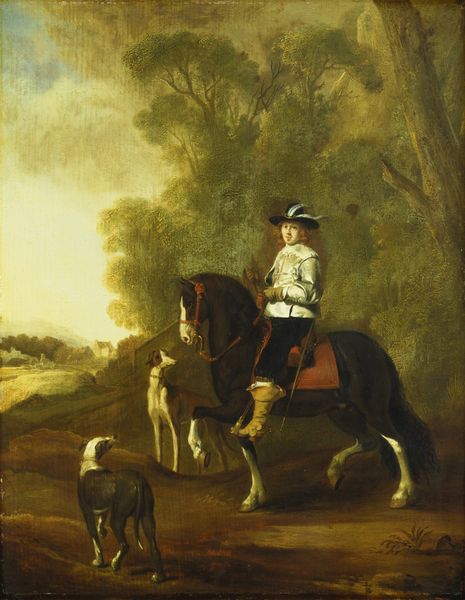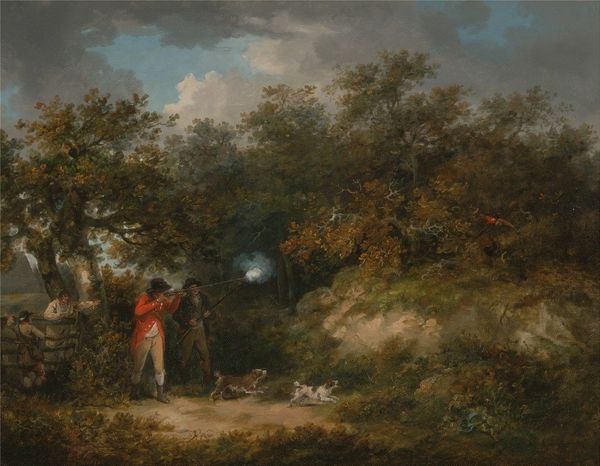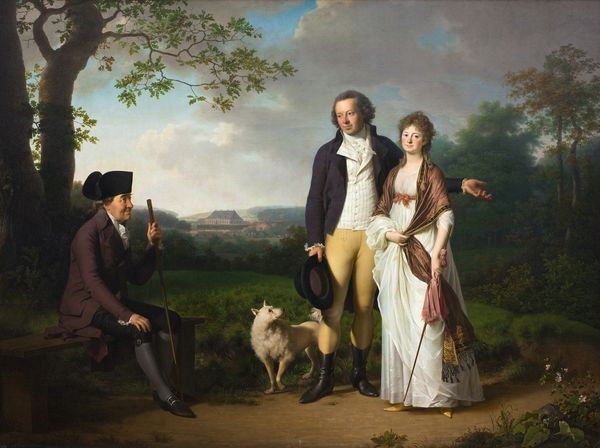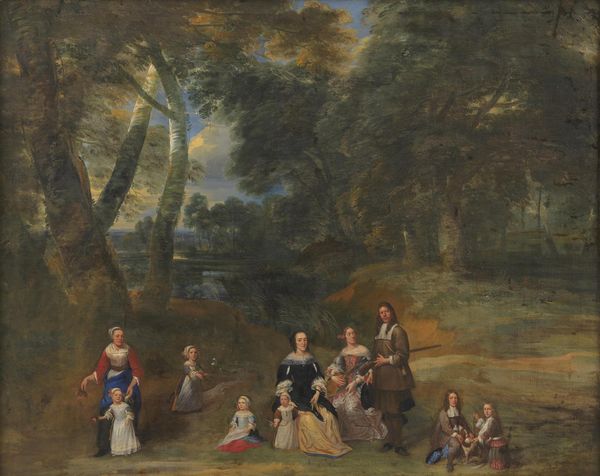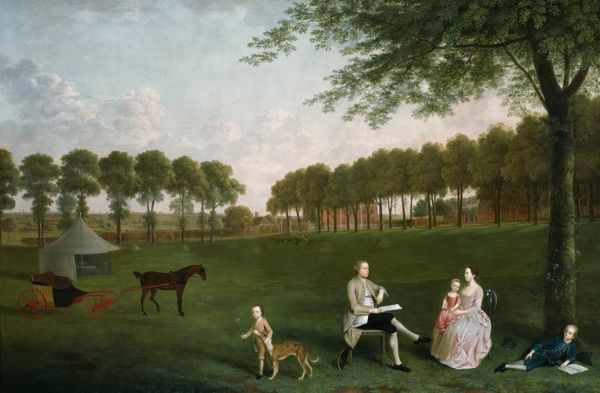
Captain Samuel Sharpe Pocklington with His Wife, Pleasance, and possibly His Sister, Frances 1769
0:00
0:00
Copyright: Public Domain: Artvee
George Stubbs painted Captain Samuel Sharpe Pocklington with His Wife, Pleasance, and possibly His Sister, Frances. The overarching tree is a silent witness, its presence a grounding force, deeply rooted in the earth, providing shade and shelter. The oak is often a symbol of endurance, strength, and longevity. In Stubbs's painting, the gesture of the woman reaching out to the horse embodies a profound connection between humanity and nature. Think back to equestrian statues across Roman antiquity, where the horse symbolized power, nobility, and control. Yet here, the woman's gentle touch subverts the symbolism; her gesture is one of reverence and affectionate understanding, a nod to the animal spirit. This resonates through time, echoing in the works of Renaissance masters like Leonardo da Vinci, whose studies of horses reveal a deep fascination with their anatomy, movement, and expressive potential. The horse, thus, has served as a mirror reflecting our own desires and aspirations. This tableau evokes a sense of pastoral harmony, a momentary pause in the theater of life, where the boundaries between humans and animals blur. The image engages us on a subconscious level, reminding us of our shared existence.
Comments
No comments
Be the first to comment and join the conversation on the ultimate creative platform.
